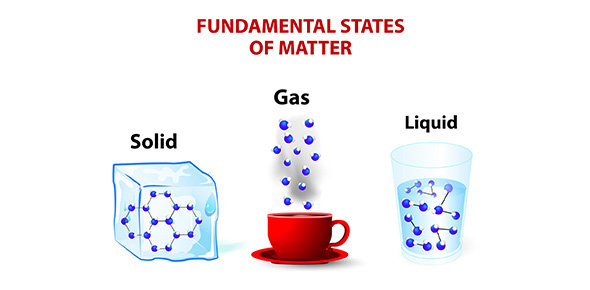Physical Changes Of Matter Quiz

This is a quiz about the law of conservation of matter, about physical and chemical changes, and sublimation.
Questions and Answers
- 1.
A physical change will:
- A.
Create a new substance.
- B.
Will have an energy transference.
- C.
Will use oxidation.
- D.
Will change the properties of the substance.
Correct Answer
B. Will have an energy transference.Explanation
A physical change refers to a change in the form or state of matter without altering its chemical composition. In this case, the correct answer is "will have an energy transference." This is because during a physical change, energy is either absorbed or released, resulting in a transfer of energy. This can be observed, for example, when ice melts into water or when a solid is heated and turns into a gas. The change in energy is a characteristic of physical changes and is not directly related to the creation of a new substance, oxidation, or changing the properties of the substance.Rate this question:
-
- 2.
A chemical change will:
- A.
Will not have an energy transference.
- B.
Might use electrolysis.
- C.
Will create a new substance.
- D.
Will create a new compound.
Correct Answer
B. Might use electrolysis.Explanation
A chemical change refers to a process where one or more substances are transformed into different substances with different properties. Electrolysis is a method that involves the use of an electric current to drive a non-spontaneous chemical reaction. It is commonly used to break down compounds into their constituent elements or ions. Therefore, it is possible for a chemical change to involve the use of electrolysis as a means to create new substances or compounds.Rate this question:
-
- 3.
_______________ is the effect of a substance changing from a solid to a gas.
Correct Answer
SublimationExplanation
Sublimation is the process in which a substance transitions directly from a solid state to a gas state, bypassing the liquid state. This occurs when the substance is heated and the vapor pressure of the solid exceeds the atmospheric pressure. During sublimation, the particles of the substance gain enough energy to break the intermolecular forces holding them together in the solid state, resulting in the formation of a gas. This process is commonly observed in substances like dry ice (solid carbon dioxide) and mothballs (naphthalene).Rate this question:
- 4.
Explain, with an example, why matter cannot be destroyed.
- 5.
Three substances that sublimate are: __________________, __________________,and _____________________________________________________________.
Correct Answer
iodine, dry ice, snow under a sudden warm upExplanation
The three substances that undergo sublimation are iodine, dry ice (solid carbon dioxide), and snow under a sudden warm up. Sublimation is the process in which a solid directly converts into a gas without passing through the liquid phase. Iodine crystals, dry ice, and snow can all undergo sublimation when exposed to specific conditions. In the case of snow, a sudden warm up causes the solid snow to directly convert into water vapor without melting into liquid water.Rate this question:
- 6.
Give an example of an exothermic energy transference and EXPLAIN why it is exothermic.
- 7.
Give an example of an endothermic energy transference and EXPLAIN why it is endothermic.
Quiz Review Timeline +
Our quizzes are rigorously reviewed, monitored and continuously updated by our expert board to maintain accuracy, relevance, and timeliness.
-
Current Version
-
Mar 22, 2023Quiz Edited by
ProProfs Editorial Team -
Apr 23, 2009Quiz Created by
Roseweldon
- Acceleration Quizzes
- Acoustic Quizzes
- Chapters Of Physics Quizzes
- Distance Quizzes
- Electrolysis Quizzes
- ESD Quizzes
- Frequency Quizzes
- Light And Reflection Quizzes
- Logic Gate Quizzes
- Magnetic Field Quizzes
- Momentum Quizzes
- Motion Quizzes
- Online Physics Quizzes
- Optics Quizzes
- Physics Of Sound Quizzes
- Practice Physics Quizzes
- Properties Of Matter Quizzes
- Quantum Quizzes
- Quantum Physics Quizzes
- Reflection Quizzes
- Refraction Quizzes
- Secondary 3 Physics Quizzes
- Sound Quizzes
- Speed Of Light Quizzes
- Thermodynamics Quizzes
- Velocity Quizzes
- Work And Energy Quizzes


